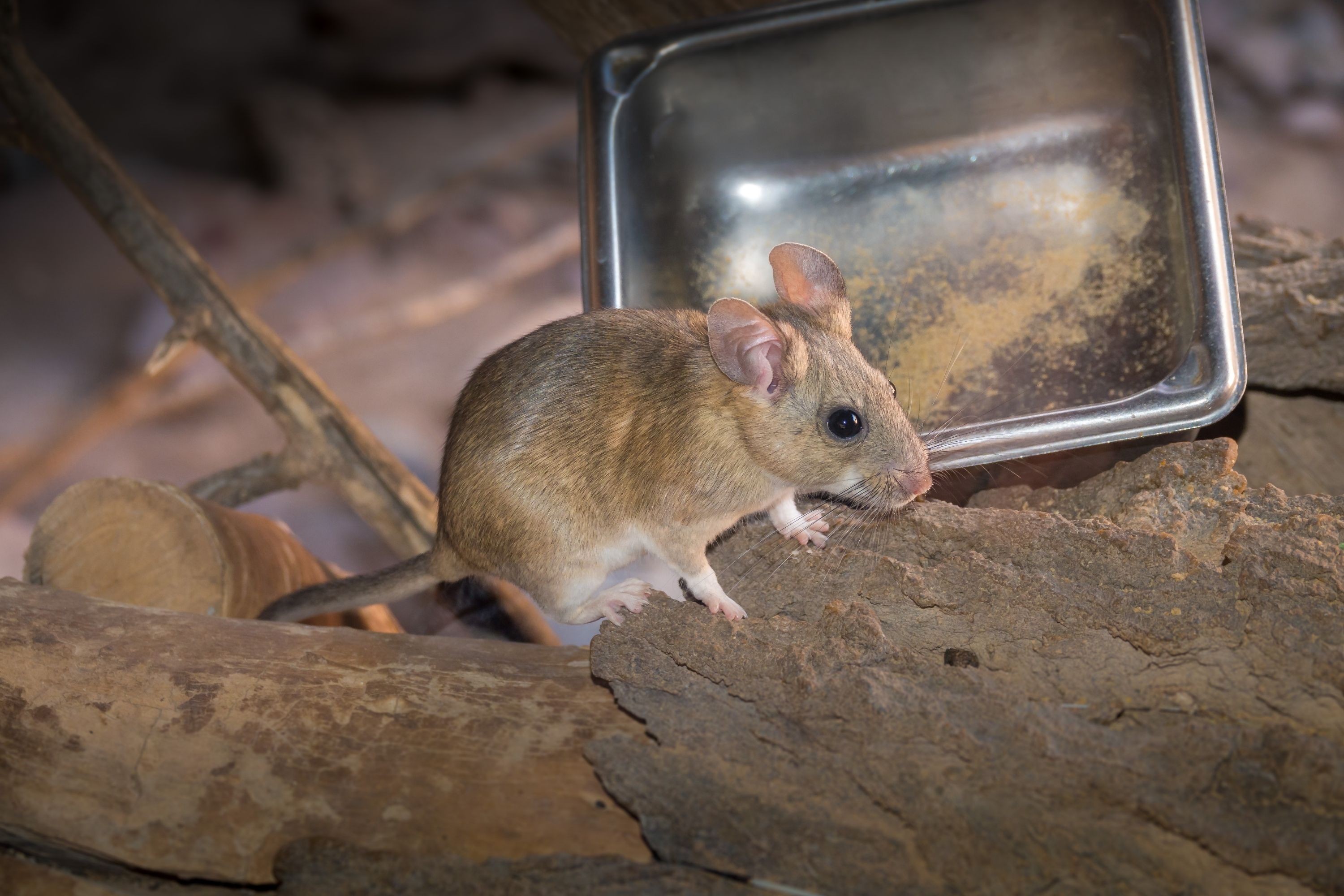Eastern woodrat
(Neotoma floridana)

Description
The eastern woodrat (Neotoma floridana), also known as the Florida woodrat or bush rat is a pack rat native to the central and Eastern United States. It constructs large dens that may serve as nests for many generations and stores food in outlying caches for the winter. While widespread and not uncommon, it has declined or disappeared in several areas. The eastern woodrat is a rodent of medium size, with an average length of 38 cm and weighing 217-333 g. The body is short and stocky and the tail is exceptionally long (15–20 cm). It is covered in a soft, gray-brown pelage, which is darker dorsally. Belly and feet are white. Sexes are alike, but males tend to be slightly larger. The distribution for the eastern woodrat stretches across the Southeastern and Midwestern United States. They are located as far south as the Tennessee River and Central Florida. The more central areas they are found are Kentucky and Tennessee. Northern locations include Kansas, central Missouri, and southern Illinois. They can also be found along the Appalachian Mountains that range all the way to New York. They're also in some western locations and Piedmont areas of Maryland. They can be see in places like woodlands, prairies, mountains, swamps, lowland hardwood forests, man as far west as Colorado. The more disjunctive population occurrence is in Nebraska and Key Largo Florida. Woodrats are usually found in marshes, coastal plains, and grasslands. The eastern woodrat's habitat ranges latitudinally from central Florida to southeastern New York, and longitudinally from Connecticut to eastern Colorado. Reintroduction to north-eastern states, such as Illinois, have occurred in the 2010s. With a wide range but low population density, this species is considered uncommon. The overall population has been decreasing since 1982. The primary cause for this decline in the South-Eastern United States has been habitat due to human development of the Coastal Plains. The species has been recovered as a fossil from late Pleistocene deposits in southeastern New Mexico, several hundred miles southwest of its nearest current range. The species does not hibernate, even in the northern extremes of its range. The species inhabits wooded areas, swamps and hedges, with a variety of different habitat preferences reported for the recognized geographic subspecies.
Taxonomic tree:







